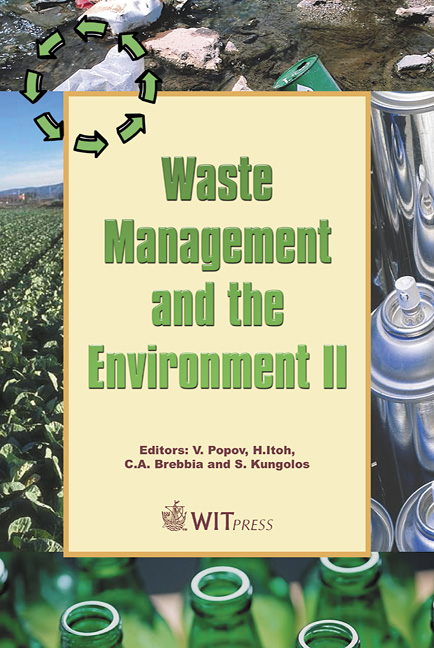Improvement Of Waste Value As Biodegradable Plastic
Price
Free (open access)
Transaction
Volume
78
Pages
10
Published
2004
Size
263 kb
Paper DOI
10.2495/WM040351
Copyright
WIT Press
Author(s)
C. Kasemsap & C. Wantawin
Abstract
Because of the increase in plastic waste and insufficient landfill area for waste disposal, the introduction of biodegradable plastic e.g. Polyhydroxyalkanoate (PHA) is considered. Currently, the production of industrial PHA using pure culture leads to high production costs, which makes it less competitive than conventional plastic. However, the microorganisms in excess activated sludge from wastewater treatment plants can utilize polyphosphate and glycogen as an internal energy source to uptake organic substrates and store them as PHA. This research is to study batch PHA production by using excess sludge containing 2,6, and 8 polyphosphate content derived from three sequencing batch reactors (SBRs). At the end of the aerobic phase in the SBR process, 800 ml of excess sludge were fed with an acetate solution of 1,000 mg COD l-1, and bubbled with nitrogen gas as well as agitated with a stirrer. The pH was adjusted to 6 and 8 by a pH controller. The sludge was sampled at 20, 40, 80, 120 and 150 minutes to analyze PHA, glycogen, polyphosphate, orthophosphate, and COD. The higher energy budget in the form of polyphosphate content induced higher acetate uptake resulting in an increased PHA content of 40, 43, and 51 percent at pH 6 to 38, 39, and 51 percent at pH 8 for 2, 6, and 8 percent polyphosphate, respectively. Moreover, the fraction of PHB in PHA increased from 60 to 70 percent by activated sludge containing 2 to 8 percent polyphosphate content owing to the higher acetate uptake. Keywords: excess sludge; biodegradable plastic; polyhydroxyalkanoate (PHA); polyphosphate.
Keywords
excess sludge; biodegradable plastic; polyhydroxyalkanoate (PHA); polyphosphate.





